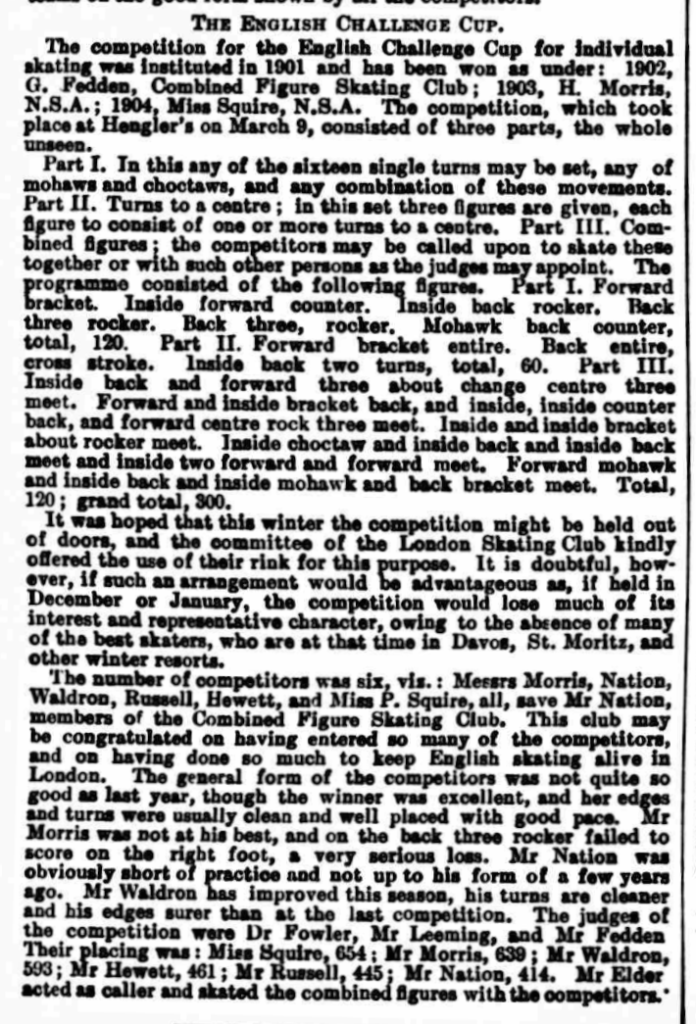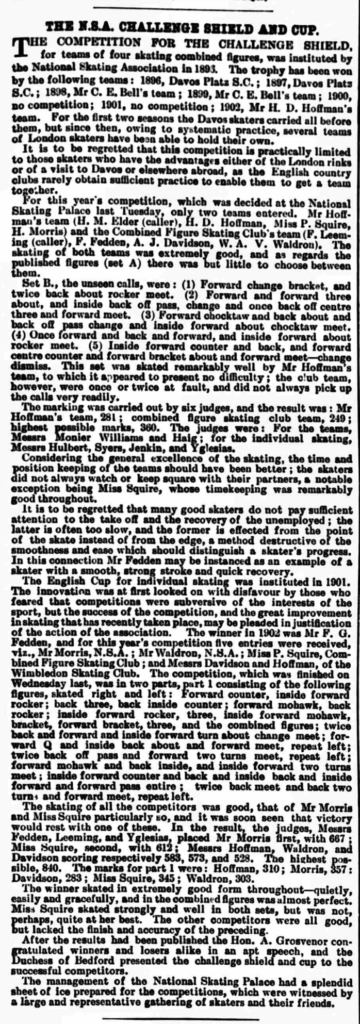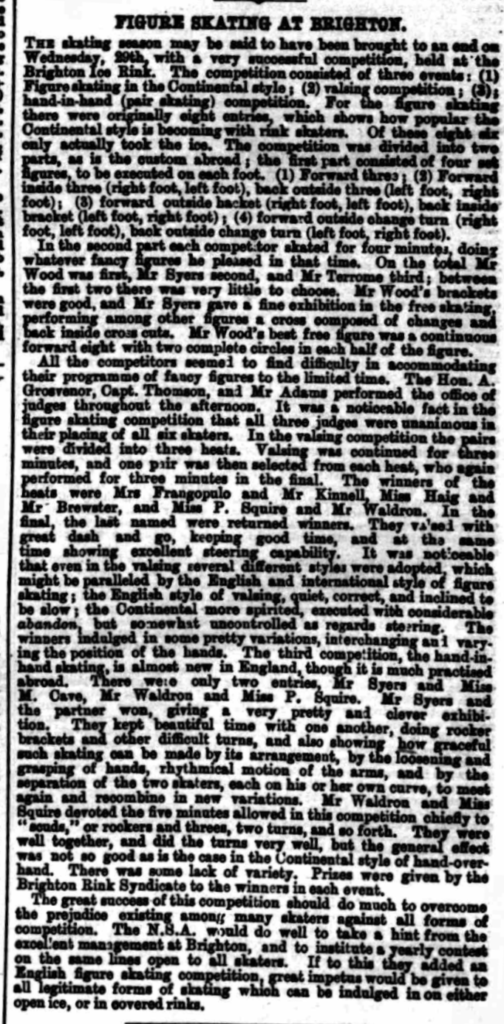My article on English skating just came out! Here’s the citation:
Thurber, B.A. 2021. “The English Style: Figure Skating, Gender, and National Identity.” Sport History Review. Advance online publication. https://doi.org/10.1123/shr.2020-0023.
Abstract
During the second half of the nineteenth century, a unique style of figure skating developed in Great Britain. This style emphasized long, flowing glides at high speed with a stiff, upright body posture. It contrasted with the International style, a type of skating developed on the Continent that favored brisk limb movements and showy tricks, such as jumps and spins. English skaters saw the International style as effeminate, while their own represented their idea of masculinity and allowed them to express their national identity. After the founding of the International Skating Union in 1892, British skaters found it necessary to adopt the International style to be competitive. Women proved better able to do so than men, and Madge Syers won the gold in the 1908 Olympics. Over time, the process of transnational exchange enacted through international competition resulted in the near-disappearance of the English style.



